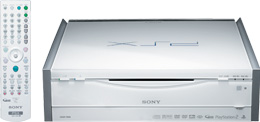The British Video Association (BVA) has surveyed 16,000 people between 12 and 74 and extrapolated that there are 1.67 million illegal film downloaders in the UK, as they believe that 4% of the population are indulging in the practice.
We think this gives an inaccurate picture. The entire population doesn’t have internet access, and downloading all of Kill Bill Volume 1 on a dialup is frankly insane, limiting this kind of piracy to broadband subscribers. Ofcom estimates that there are around 4 million broadband homes out there – so perhaps 4% of them are downloading, making it roughly 160,000 pirates (which we feel is more accurate), or perhaps 25% of broadband subscribers are pirates (which we doubt).
The BVA goes on to estimate that this downloaders cost the video industry £45 million (€) in lost revenue. A quick calculation on the back of an HP48 shows that this is roughly two full price DVDs per downloader – yet the BVA goes on to say that the average downloader grabs some 30 films and TV episodes a year. Since many downloaders like to collect and share files for kudos, we suspect the picture in the UK is of around 160,000 pirates downloading 30 films.
Interestingly, according to the survey, the average downloader is under 35, male, and lives in the south of England – presumably because broadband is more prevalent there and not because they’re more prone to thieving.
 Following the recent launch of Sony’s PSX, which combines the functions of a PlayStation 2, PVR and DVD burner (
Following the recent launch of Sony’s PSX, which combines the functions of a PlayStation 2, PVR and DVD burner (